A street in Brooklyn carries the name of Carl Erskine, who spent most of his major-league baseball career pitching at Ebbets Field. He pitched — and won — the first game the Dodgers played in the Los Angeles Coliseum in 1958.
But after his baseball playing career ended, Erskine’s life in his hometown of Anderson revealed many qualities that made him so much more than just a great baseball player.
College coach. Businessman. Banking executive. Musician. Charter member of the Fellowship of Christian Athletes. Pioneer organizer and promoter of Special Olympics. Popular public speaker. Storyteller. Author. Benefactor.
These many roles mark the life of the man tapped by The Herald Bulletin in 2015, at Anderson’s sesquicentennial, as the most influential person in the community’s history.
Erskine, who was born Dec. 13, 1926, died Tuesday morning at the age of 97 in Anderson with family by his side.
His son Gary was with him through the night at Community Hospital Anderson.
“I was talking to him, thanking him for everything,” Gary said, noting that his dad was not fully conscious. “Reflecting on Dad as a person, … he had a superpower of being a gentle, caring person without ever having to read a book on that or take lessons on how to do it. He would say, ‘Do your best and see the best in other people.’”
Countless others found a role model in Erskine, as well.
“He was my mentor,” said Don Brandon, who played at Anderson College when Erskine returned from the majors to coach and who later succeeded him at the helm of the Ravens.
“He has meant so much in so many ways to the school and the city.”
Growing up on Anderson’s west side, Erskine played basketball and baseball with two close friends, Johnny Wilson and Jack Rector. They played at Shadeland Elementary, Central Junior High and Anderson High School, as well as city parks league and American Legion baseball in the summer.
“I was a year behind Carl in grade school,” Wilson recalled several years before his death at age 91 in 2019. “We’ve had a close relationship ever since.”
Wilson became Indiana’s Mr. Basketball after leading the Anderson Indians to the IHSAA state championship in 1946.
It didn’t matter to Erskine that his best friend was Black and he was white. They were just boys who enjoyed running around together, playing sports and going to the movies. Because discrimination practices required Wilson to sit in the balcony at the movies, Erskine and Rector thought nothing of joining him wherever he sat.
“They wouldn’t do anything I couldn’t do with them,” Wilson recounted.
Taught to pitch by his father, Matt Erskine, Carl developed a strong arm at an early age, dominating hitters in American Legion play during summer ball. “He made me a great first baseman because he would strike everybody out,” Wilson quipped.
Graduating from Anderson High School in 1945, Erskine’s baseball ambitions were put on hold when he was drafted into the U.S. Navy. He soon was scouted by the Dodgers, left the Navy and signed a baseball contract.
It didn’t take long to reach the big leagues. Erskine joined the Dodgers in July 1948, pitching in his first major league game on July 25. He remembered carrying his Fort Worth minor-league bag when he first reported to the Dodgers. A knowledgeable Brooklyn fan commented in Brooklynese: “Hey, dere’s Oiskin from Foit Woith.”
Before his major-league career ended June 4, 1959, Erskine had won 122 games and lost 78, struck out 981 batters, pitched more than 1,718 innings, thrown two no-hitters, set a World Series single-game strikeout record of 14 batters and pitched and won the transplanted Dodgers’ West Coast debut.
All the while, he and his wife, Betty, maintained their home in Anderson and began raising their family, which would grow to include four children: Carl Dan, born in 1948; Gary (1950); Susie (1955) and Jimmy (1960-2023).
“We got to be old enough when the Dodgers moved to Los Angeles that Dan and I could go to the games without Mom,” Gary recalled. “We’d run around the clubhouse. Then, during the game, we’d sit in the first row behind the dugout so Dad could keep an eye on us.”
Meanwhile, folks back home in Madison County followed Erskine’s baseball career closely. When the Dodgers were in the World Series, radios and TV sets were tuned to the games and little work was accomplished. Police were instructed not to issue parking tickets during games so that fans wouldn’t have to miss any action to feed parking meters.
In the 1953 season, Erskine won 20 games and set the World Series strikeout record. Bringing a barnstorming team to Anderson during the offseason, he received a hero’s welcome. He pitched in 11 World Series games, though the Dodgers won only one world championship in Brooklyn, in 1955. He received another World Series ring in 1959 after his active retirement.
One of his books about his baseball experiences, “What I Learned from Jackie Robinson,” details his friendship with the man who broke baseball’s color barrier. While Erskine’s cordial relationship with Robinson and his family was atypical for that time period, his earlier friendship with Wilson had paved the way by creating an attitude that racial differences were unimportant.
For Wilson, though, the societal changes came too late. He played in the Negro leagues and with basketball’s Harlem Globetrotters, but never reached the big leagues in either sport.
“That’s how things were,” said Wilson of the difference in opportunity. But he added of his relationship with Erskine, “We always kept in touch.”
With age and injuries, Erskine’s career was on the downside when the Dodgers moved to Los Angeles in 1958. He called it quits in 1959, returning to Anderson and enrolling at Anderson College as a 32-year-old freshman. As it happened, the college had a baseball coaching vacancy, and he was approached about leading the team.
“He won a World Series share in 1959,” recalled Brandon, “and in 1960 and 1961, he was my coach.”
Another event occurred around that time that would profoundly affect the direction Erskine’s life took. His youngest son, Jimmy, was born with Down syndrome. The Erskines were urged to institutionalize him, but they refused to consider the possibility.
Erskine coached Anderson College for 12 seasons, leading the Ravens to the NAIA World Series in 1965. He had 18 all-conference players, three of whom were named All-American. In his final season, 1973, he coached a freshman named John Bargfeldt who went on to play three years in the Chicago Cubs minor-league system.
“I was better at football then than I was baseball,” said Brandon, “but he used to tell people, ‘Brandon is hard to keep on the bench.’ I learned to throw a slider from him, and that wasn’t even one of his pitches.”
When the Ravens traveled to away games, Brandon always tried to ride in the same vehicle as Erskine. “I wanted to hear the stories he told about his days with the Dodgers,” Brandon explained.
While he was coaching the Ravens, Erskine launched a successful insurance business. His visibility as a former major-leaguer served well in that endeavor.
“I went with him once when he threw batting practice at Crosley Field in Cincinnati,” Brandon said. “He said the arm was feeling pretty good that day. And that night he made $100,000 in insurance sales.”
Special Olympics passion
A lifelong member of Anderson’s First Baptist Church, Erskine was active in the Fellowship of Christian Athletes, which recruits professional athletes to mentor members of school teams.
As Jimmy grew, his father became conscious that society offered few resources for youngsters with developmental disabilities. Erskine became a prime mover in establishing what is now the Hopewell Center, which offers training and employment opportunities for people with disabilities.
Erskine also was approached by Eunice Kennedy Shriver, President John F. Kennedy’s sister, during the formation of the Special Olympics movement. That became a passion of the Erskines, who helped establish the Madison County chapter and have been instrumental in fundraising efforts locally, statewide and nationally.
“Special Olympics in Madison County would not have existed without him,” Paul Gray, a longtime Anderson University physical education professor who headed up Madison County Special Olympics for many years, said in the early 2010s. “He took the first group of athletes to Terre Haute in 1970 before anybody in the county knew about Special Olympics.”
Erskine became a mainstay at Indiana Special Olympics at Indiana State University for decades afterward.
AU took a lead role in Madison County Special Olympics, conducting the annual meets as students and staff served as timers, coaches and huggers for the individual athletes.
“One year, Sargent Shriver [Eunice Shriver’s husband and the first head of the Peace Corps] spoke at AU because of Carl’s friendship with them,” Gray recalled. “Carl has raised money in the county and assisted at the state level and the national level. He is friends with so many national figures.”
Erskine’s success in the insurance business carried over to his next chapter. He was bringing so much business through First National Bank that he was invited to join its board of directors. Soon he was made an officer of the bank, which merged into the present STAR Financial Bank.
With his other responsibilities increasing, Erskine handed over to Brandon the reins of Ravens head coach, remaining in the title of baseball advisor. He made clear early on it was only an advisory role, Brandon explained.
“He never got involved in decision-making unless I asked him,” Brandon said. “He wasn’t going to meddle.” As an example, Brandon recalled the time he went against “the book” by walking the other team’s top hitter to load the bases in a close game only to have the next hitter bat in the winning run. “I was asking Carl about it,” Brandon said. “All he said was, ‘Did it work?’ I said, ‘No,’ and he said, ‘There’s your answer.’”
Even after many years out of professional baseball, Erskine regaled private and public audiences with stories about his playing days in the golden age of baseball. One year after he had been succeeded as AU coach by Brandon, he joined the team for a game at Victory Field in Indianapolis on the occasion of AU’s debut of new uniforms. Not only were the uniforms in the Ravens’ trademark colors of orange and black — also the colors of the Dodgers’ hated rival, the Giants — but they sported pinstripes, in the tradition of the even more despised New York Yankees. “He said, ‘You’re killing me,’” Brandon recalled with a laugh.
Through it all, Erskine continued to think of himself as “just a kid from Anderson.” He accepted accolades with modesty, deflecting praise whenever possible.
Lifetime achievement
In 2015, after Major League Baseball’s Lifetime Achievement Award, Erskine quipped, “I got the call about the award about two weeks ago from Dan Foster, who is the head of the MLB alumni. I asked him why I was getting the award. Was it for giving up the longest home run of anyone in history?”
Eight years later, Erskine was honored again with a similar award, the Buck O’Neil Lifetime Achievement Award from the National Baseball Hall of Fame.
Erskine’s comfort as a public figure and public speaker was hard won. His son Gary remembers his father talking about getting sick to his stomach whenever he was asked to speak publicly early in his baseball career. Years later, Gary said, he was always on the edge of his seat when his dad spoke in public.
“If he was speaking, I was listening,” Erskine’s middle son said. “You could count on him saying something really meaningful.”
At STAR Financial Bank, Erskine advanced to regional president as his influence spread across the industry. Oz Morgan, who worked with him for many years and succeeded him as regional president, recalled in the early 2010s the positive influence Erskine had during his career in financial service.
“He had personality and the integrity that goes with it,” Morgan explained. “He has done so much good, not only in our community but for so many causes in general. People got the message that if you’re dealing with a company with the same values as Carl Erskine, you’re dealing with a reputable company.”
Morgan remembered the time a group from STAR Financial was at a conference in St. Louis seeking a large commercial account. Among those they talked to was an African-American man who told of the time he had seen the Dodgers play in the late 1940s in St. Louis, sitting in the outfield seats in the then-segregated Sportsman’s Park.
“It was my first chance to see Jackie Robinson,” the man said. “He came onto the field walking and talking with a white guy. And that white guy was you,” he said to Carl. Needless to say, the bank got the account.
“He has more stories about his baseball career and about life and they are all wonderfully interesting and all have some positive value,” Morgan explained.
Erskine also gained notoriety from his harmonica by appearing at many benefit shows with the Little Bit Country Jamboree, playing at the Paramount Theatre, the annual Gourmet Sampler to benefit Special Olympics and rendering the National Anthem on occasion at sporting events.
“He has worked a lot in the community,” Wilson said. “Anytime he was needed, he was right there.”
‘We love Anderson’
Erskine’s notoriety, not just as a baseball player but as an exemplary human being, extended well beyond his hometown.
When Erskine became the seventh Hoosier to receive the state’s top award, the Sachem, in 2010, Indiana Gov. Mitch Daniels said, “If you get asked, as I often do, what’s a Hoosier? You can just say it’s this man. He’s the best we’ve got.”
Erskine was the subject of a chapter in Roger Kahn’s book, “The Boys of Summer,” about the Dodgers of his era. And he also penned books of his own, “Tales From the Dodger Dugout” in addition to “What I Learned from Jackie Robinson.”
An outgrowth of the latter was another book, “The Parallel,” concerning society’s growth on the fronts of race relations and handicapped individuals. “The Parallel” is available only through a donation to Special Olympics.
The Special Olympics movement’s future was further boosted with the establishment of The Carl and Betty Erskine Society, which encourages gifts and bequests to the cause.
The Erskines also made their property in Anderson available for construction of a new elementary school that bears the Erskine Elementary name. The Carl D. Erskine Rehabilitation Center also carries his name, with a statue of him winding up to throw a pitch located just outside the building off Meridian Street.
“People sometimes ask if Carl gets too much attention in Anderson,” Brandon noted. “My answer to that is no he doesn’t.”
“I’m blessed to have known him and been able to work with him,” added Gray, echoing the thoughts of many in the Anderson area.
Local folks saw something genuine in Erskine. Here was a man who had gained national fame, but when it came down to it, he really was proud to be just a kid from Anderson who came home when he could have chosen to live about anywhere.
“The thing that I take from Dad is be yourself, be true to yourself, see the good things in life,” Gary Erskine said. “If I say something negative, he’ll say ‘What?’ He doesn’t see the negative. He sees the good in everything.”
Carl Erskine’s impact in his hometown was so great that he and Wilson were chosen co-People of the Century by The Herald Bulletin in 1999. Sixteen years later, in a letter to the editor soon after being selected as the most influential person in Anderson’s 150-year history, Erskine wrote:
“Hello, Anderson.
“Thank you, I’m honored. Betty and I feel our hometown has given far more to our family than we could ever do in return.
“We love Anderson and pray for all good things to happen here.”





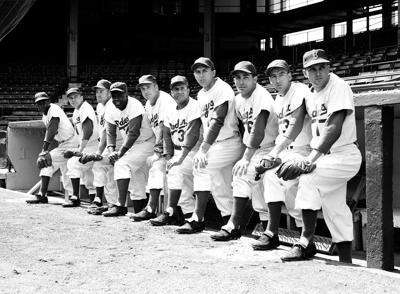


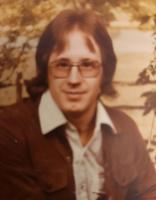
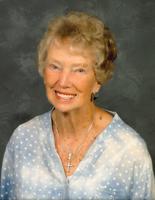
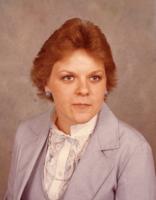
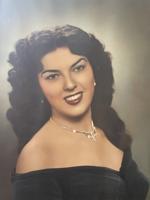


















Commented
Sorry, there are no recent results for popular commented articles.